
Statement on Northern Territory government declaring buffel grass as weed
Buffel grass is undeniably one of the most severe invasive threats to the environment and culture of Central and Northern Australia

Buffel grass is undeniably one of the most severe invasive threats to the environment and culture of Central and Northern Australia
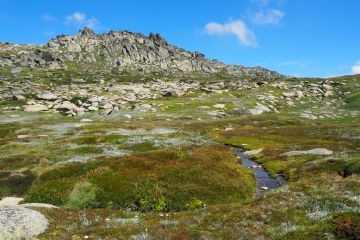
Today the NSW Supreme Court has rejected an application from pro-brumby group, Snowy Mountain Bush Users Group, to halt aerial culling in Kosciuszko National Park ahead of a hearing on July 2 and 3.

Tim Low, co-founder of the Invasive Species Council and esteemed author, has been appointed a Member of the Order of Australia (AM) for his extraordinary contributions to conservation and environmental education.

The ABC Ombudsman has released a rare, scathing report which finds the ABC breached the Corporation’s editorial standards for accuracy and impartiality when reporting on the issue of feral horses in Kosciuszko National Park.
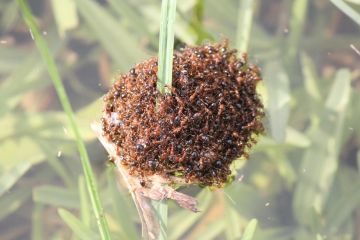
The Invasive Species Council has issued an urgent call to boost funding in the fire ant suppression zone following the alarming discovery of nests on the Sunshine Coast at Nirimba.

New global research highlights the severe impact of invasive species on Indigenous culture and connection to Country.
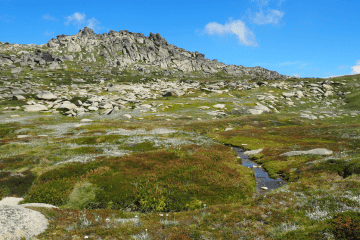
This is great news for our native animals and mountain streams. For the first time the number removed exceeds annual population growth, meaning we can expect a genuine reduction in the number of feral horses in the National Park.

The Invasive Species Council has called on the Australian Government to swing into immediate action to prepare for the fight against a killer bird flu turning up in Australia’s wild birds, following the announcement of the discovery of a bird flu strain on an egg farm in Victoria.
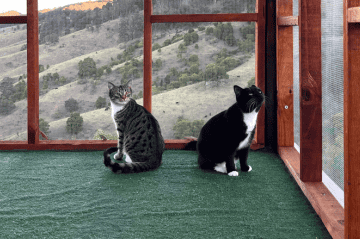
Analysis by the Biodiversity Council shows that if all pet cats were kept securely contained by their owners it would save hundreds of human lives, millions of native animals and billions of dollars each year

Buffel fuelled wildfires affect all stakeholders, they put lives at risk and significantly impact the environment, culture, health, tourism, the arts, land managers and emerging economies.

While we support rehoming as one management option for feral horses, there must be strict protocols to ensure the high welfare risks involved are reduced.

A coalition of environment groups have sounded the alarm about an Australian fish, the Yalmy galaxias, which is on the brink of extinction.
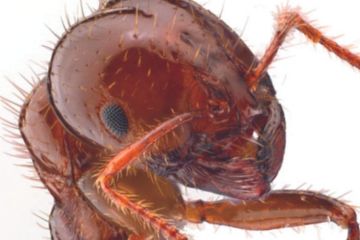
New infestation of deadly fire ants found west of the Great Dividing Range in the Murray Darling Basin

There will be ‘disastrous consequences’ for Australia’s natural environment and economy if eradication is not successful
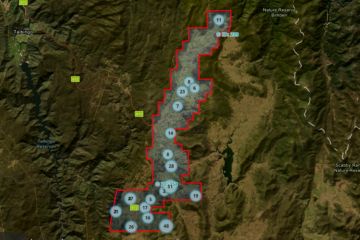
New, highly detailed aerial imagery, which has been publicly released by mapping company Airborne Logic, has revealed the extensive damage by feral horses to the alpine rivers, grasslands and mossbeds of Kosciuszko National Park.

Buffel grass is undeniably one of the most severe invasive threats to the environment and culture of Central and Northern Australia

Today the NSW Supreme Court has rejected an application from pro-brumby group, Snowy Mountain Bush Users Group, to halt aerial culling in Kosciuszko National Park ahead of a hearing on July 2 and 3.

Tim Low, co-founder of the Invasive Species Council and esteemed author, has been appointed a Member of the Order of Australia (AM) for his extraordinary contributions to conservation and environmental education.

The ABC Ombudsman has released a rare, scathing report which finds the ABC breached the Corporation’s editorial standards for accuracy and impartiality when reporting on the issue of feral horses in Kosciuszko National Park.

The Invasive Species Council has issued an urgent call to boost funding in the fire ant suppression zone following the alarming discovery of nests on the Sunshine Coast at Nirimba.

New global research highlights the severe impact of invasive species on Indigenous culture and connection to Country.

This is great news for our native animals and mountain streams. For the first time the number removed exceeds annual population growth, meaning we can expect a genuine reduction in the number of feral horses in the National Park.

The Invasive Species Council has called on the Australian Government to swing into immediate action to prepare for the fight against a killer bird flu turning up in Australia’s wild birds, following the announcement of the discovery of a bird flu strain on an egg farm in Victoria.

Analysis by the Biodiversity Council shows that if all pet cats were kept securely contained by their owners it would save hundreds of human lives, millions of native animals and billions of dollars each year

Buffel fuelled wildfires affect all stakeholders, they put lives at risk and significantly impact the environment, culture, health, tourism, the arts, land managers and emerging economies.

While we support rehoming as one management option for feral horses, there must be strict protocols to ensure the high welfare risks involved are reduced.

A coalition of environment groups have sounded the alarm about an Australian fish, the Yalmy galaxias, which is on the brink of extinction.

New infestation of deadly fire ants found west of the Great Dividing Range in the Murray Darling Basin

There will be ‘disastrous consequences’ for Australia’s natural environment and economy if eradication is not successful

New, highly detailed aerial imagery, which has been publicly released by mapping company Airborne Logic, has revealed the extensive damage by feral horses to the alpine rivers, grasslands and mossbeds of Kosciuszko National Park.

Buffel grass is undeniably one of the most severe invasive threats to the environment and culture of Central and Northern Australia

Today the NSW Supreme Court has rejected an application from pro-brumby group, Snowy Mountain Bush Users Group, to halt aerial culling in Kosciuszko National Park ahead of a hearing on July 2 and 3.

Tim Low, co-founder of the Invasive Species Council and esteemed author, has been appointed a Member of the Order of Australia (AM) for his extraordinary contributions to conservation and environmental education.

The ABC Ombudsman has released a rare, scathing report which finds the ABC breached the Corporation’s editorial standards for accuracy and impartiality when reporting on the issue of feral horses in Kosciuszko National Park.

The Invasive Species Council has issued an urgent call to boost funding in the fire ant suppression zone following the alarming discovery of nests on the Sunshine Coast at Nirimba.

New global research highlights the severe impact of invasive species on Indigenous culture and connection to Country.

This is great news for our native animals and mountain streams. For the first time the number removed exceeds annual population growth, meaning we can expect a genuine reduction in the number of feral horses in the National Park.

The Invasive Species Council has called on the Australian Government to swing into immediate action to prepare for the fight against a killer bird flu turning up in Australia’s wild birds, following the announcement of the discovery of a bird flu strain on an egg farm in Victoria.

Analysis by the Biodiversity Council shows that if all pet cats were kept securely contained by their owners it would save hundreds of human lives, millions of native animals and billions of dollars each year

Buffel fuelled wildfires affect all stakeholders, they put lives at risk and significantly impact the environment, culture, health, tourism, the arts, land managers and emerging economies.

While we support rehoming as one management option for feral horses, there must be strict protocols to ensure the high welfare risks involved are reduced.

A coalition of environment groups have sounded the alarm about an Australian fish, the Yalmy galaxias, which is on the brink of extinction.

New infestation of deadly fire ants found west of the Great Dividing Range in the Murray Darling Basin

There will be ‘disastrous consequences’ for Australia’s natural environment and economy if eradication is not successful

New, highly detailed aerial imagery, which has been publicly released by mapping company Airborne Logic, has revealed the extensive damage by feral horses to the alpine rivers, grasslands and mossbeds of Kosciuszko National Park.
Get our blog the Feral Herald delivered to your inbox.
Our protected areas are being trashed, trampled, choked and polluted by an onslaught of invaders. Invasive species are already the overwhelming driver of our animal extinction rate, and are expected to cause 75 of the next 100 extinctions.
But you can help to turn this around and create a wildlife revival in Australia.
From numbats to night parrots, a tax-deductible donation today can help defend our wildlife against the threat of invasive weeds, predators, and diseases.
As the only national advocacy environment group dedicated to stopping this mega threat, your gift will make a big difference.
A silent crisis is unfolding across Australia. Every year, billions of native animals are hunted and killed by cats and foxes. Fire ants continue to spread and threaten human health. And the deadly strain of bird flu looms on the horizon. Your donation today will be used to put the invasive species threat in the media, make invasive species a government priority, ensure governments take rapid action to protect nature and our remarkable native wildlife from invasives-led extinction, death and destruction.
If you are having trouble submitting a form, please read this guide.
Please fill out the following form and one of our team will be in contact to assist as soon as possible. Please make sure to include any helpful information, such as the device you were using (computer, tablet or mobile phone) and if known, your browser (Mozilla Firefox, Chrome, Safari etc)
"*" indicates required fields
Dear Project Team,
[YOUR PERSONALISED MESSAGE WILL APPEAR HERE.]
I support the amendment to the Kosciuszko National Park Wild Horse Heritage Management Plan to allow our incredible National Parks staff to use aerial shooting as one method to rapidly reduce feral horse numbers. I want to see feral horse numbers urgently reduced in order to save the national park and our native wildlife that live there.
The current approach is not solving the problem. Feral horse numbers have rapidly increased in Kosciuszko National Park to around 18,000, a 30% jump in just the past 2 years. With the population so high, thousands of feral horses need to be removed annually to reduce numbers and stop our National Park becoming a horse paddock. Aerial shooting, undertaken humanely and safely by professionals using standard protocols, is the only way this can happen.
The government’s own management plan for feral horses states that ‘if undertaken in accordance with best practice, aerial shooting can have the lowest negative animal welfare impacts of all lethal control methods’.
This humane and effective practice is already used across Australia to manage hundreds of thousands of feral animals like horses, deer, pigs, and goats.
Trapping and rehoming of feral horses has been used in Kosciuszko National Park for well over a decade but has consistently failed to reduce the population, has delayed meaningful action and is expensive. There are too many feral horses in the Alps and not enough demand for rehoming for it to be relied upon for the reduction of the population.
Fertility control as a management tool is only effective for a small, geographically isolated, and accessible population of feral horses where the management outcome sought is to maintain the population at its current size. It is not a viable option to reduce the large and growing feral horse population in the vast and rugged terrain of Kosciuszko National Park.
Feral horses are trashing and trampling our sensitive alpine ecosystems and streams, causing the decline and extinction of native animals. The federal government’s Threatened Species Scientific Committee has stated that feral horses ‘may be the crucial factor that causes final extinction’ for 12 alpine species.
I recognise the sad reality that urgent and humane measures are necessary to urgently remove the horses or they will destroy the Snowies and the native wildlife that call the mountains home. I support a healthy national park where native species like the Corroboree Frog and Mountain Pygmy Possum can thrive.
Dear Project Team,
[YOUR PERSONALISED MESSAGE WILL APPEAR HERE.]
I support the amendment to the Kosciuszko National Park Wild Horse Heritage Management Plan to allow our incredible National Parks staff to use aerial shooting as one method to rapidly reduce feral horse numbers. I want to see feral horse numbers urgently reduced in order to save the national park and our native wildlife that live there.
The current approach is not solving the problem. Feral horse numbers have rapidly increased in Kosciuszko National Park to around 18,000, a 30% jump in just the past 2 years. With the population so high, thousands of feral horses need to be removed annually to reduce numbers and stop our National Park becoming a horse paddock. Aerial shooting, undertaken humanely and safely by professionals using standard protocols, is the only way this can happen.
The government’s own management plan for feral horses states that ‘if undertaken in accordance with best practice, aerial shooting can have the lowest negative animal welfare impacts of all lethal control methods’.
This humane and effective practice is already used across Australia to manage hundreds of thousands of feral animals like horses, deer, pigs, and goats.
Trapping and rehoming of feral horses has been used in Kosciuszko National Park for well over a decade but has consistently failed to reduce the population, has delayed meaningful action and is expensive. There are too many feral horses in the Alps and not enough demand for rehoming for it to be relied upon for the reduction of the population.
Fertility control as a management tool is only effective for a small, geographically isolated, and accessible population of feral horses where the management outcome sought is to maintain the population at its current size. It is not a viable option to reduce the large and growing feral horse population in the vast and rugged terrain of Kosciuszko National Park.
Feral horses are trashing and trampling our sensitive alpine ecosystems and streams, causing the decline and extinction of native animals. The federal government’s Threatened Species Scientific Committee has stated that feral horses ‘may be the crucial factor that causes final extinction’ for 12 alpine species.
I recognise the sad reality that urgent and humane measures are necessary to urgently remove the horses or they will destroy the Snowies and the native wildlife that call the mountains home. I support a healthy national park where native species like the Corroboree Frog and Mountain Pygmy Possum can thrive.